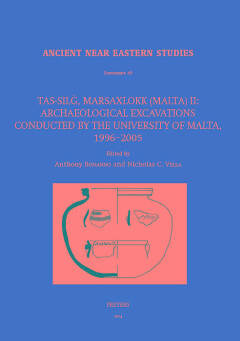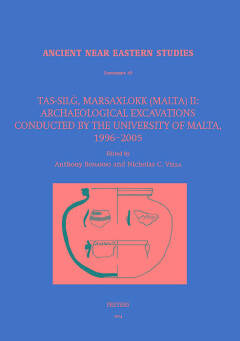
- Afhalen na 1 uur in een winkel met voorraad
- Gratis thuislevering in België vanaf € 30
- Ruim aanbod met 7 miljoen producten
- Afhalen na 1 uur in een winkel met voorraad
- Gratis thuislevering in België vanaf € 30
- Ruim aanbod met 7 miljoen producten
Zoeken
Tas-Silg, Marsaxlokk (Malta) II
Archaeological Excavations Conducted by the University of Malta, 1996-2005
€ 120,00
+ 240 punten
Omschrijving
Tas-Silg, on the south-east coast of the island of Malta, is a major multi-period site, with archaeological remains spanning four thousand years. A megalithic temple complex built in the early third millennium BC gave way to a Phoenician and Punic sanctuary dedicated to the goddess Astarte. The sacred place underwent major transformations in Roman times, becoming an international religious complex dedicated to the goddess Juno. Located on the maritime routes plied by mariners and traders, its fame did not escape the attention of the first-century BC orator Cicero. Excavated as part of a major archaeological project in the 1960s, the site of Tas-Silg lay abandoned for several decades. In 1996, the University of Malta renewed excavations at the site for ten seasons, uncovering Neolithic and Late Bronze Age occupation levels, and substantial deposits associated with ritual offerings of Punic date. This volume is the second monograph of the final publication of the excavations. It provides an account of the pottery and of the hundreds of inscribed pottery sherds that were recovered during the excavations. It forms a companion volume to the first monograph, which reports on the history of the site and other finds.
Specificaties
Betrokkenen
- Uitgeverij:
Inhoud
- Aantal bladzijden:
- 698
- Taal:
- Engels
- Reeks:
- Reeksnummer:
- nr. 49
Eigenschappen
- Productcode (EAN):
- 9789042930773
- Verschijningsdatum:
- 7/07/2015
- Uitvoering:
- Hardcover
- Formaat:
- Genaaid
- Gewicht:
- 303 g

Alleen bij Standaard Boekhandel
+ 240 punten op je klantenkaart van Standaard Boekhandel
Beoordelingen
We publiceren alleen reviews die voldoen aan de voorwaarden voor reviews. Bekijk onze voorwaarden voor reviews.











